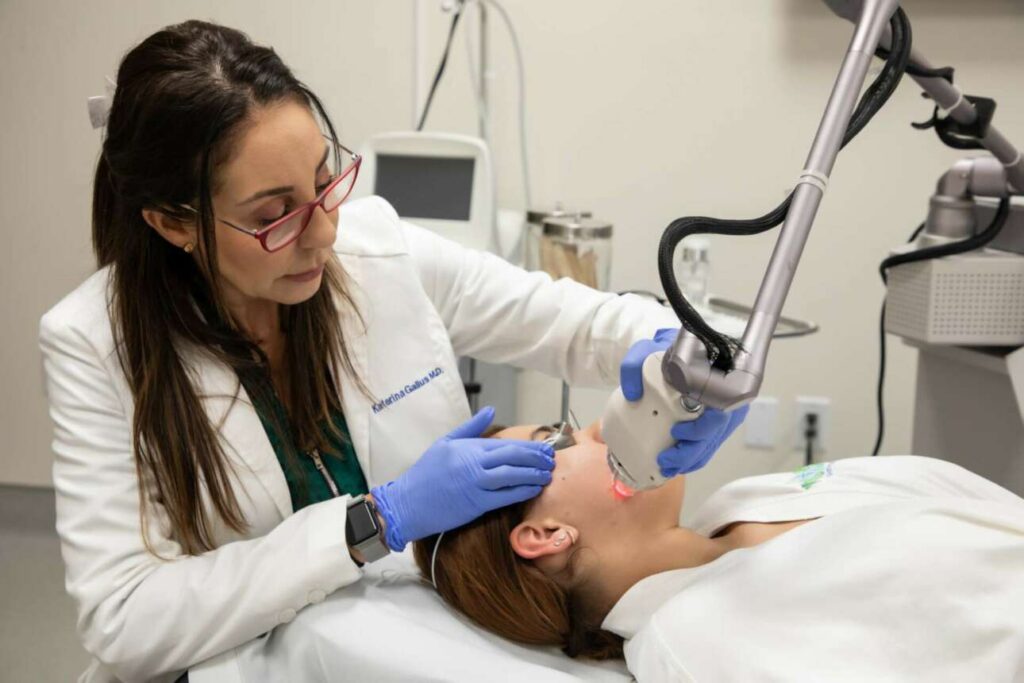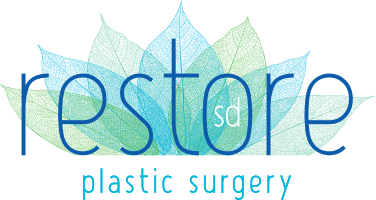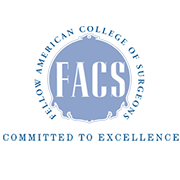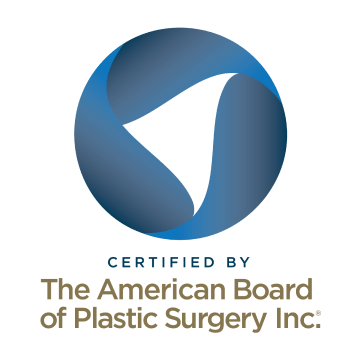What is prejuvenation?
The term “pre-juvenation” is defined as preventative rejuvenation and usually refers to treatments of facial aging. Early sign of aging can become manifest as early as the mid-to-late twenties and Millennials are not content to sit back and collect wrinkles until it is time for a facelift. More and more commonly, patients are starting to attack the aging process with Botox®, Juvederm®, Restylane®, and medical grade skin care routines.
Why is “prejuvenation” the latest trend in anti-aging?
In one word – Millennials. The oldest of the Millennial generation is hitting the mid-thirties and the youngest are quickly becoming job-holding adults. The fluid changes in societal acceptance of plastic surgery and anti-aging treatments has fueled this latest generation (with disposable income) to seek preventative aging treatments in record numbers. The boom of social media has affected all ages but has been largely concentrated to the Millennial generation. The popularity of selfies, the marketing of Botox in magazines, and the growing use of injectable fillers makes perceived beauty more achievable than ever before.
Why is this generation so different?
Age and stage of life are the two biggest determining factors. Couples seem to be marrying and having children later in life, and young women and men are spending more of their young adult lives building careers and focusing on work-life balance better than prior generations. As more young adults live their lives on digital social media, appearance is more important than ever. Dating apps continue to change the landscape of social interaction and having a youthful and healthy appearance has taken on a new importance.
Is “prejuvenation” really a thing?
Absolutely In today’s world there is a much better appreciation for the accumulated effects of sun damage and we now have the knowledge and tools to do a much better job on protecting our skin and looking younger much longer than ever before. The days of tanning with baby oil and “laying out” by the pool have been replaced with a healthy appreciation of sunscreen and avoiding excessive sun exposure. The next logical extension of this attitude is avoiding and preventing aging altogether.

What is the best age to start a “prejuvenation” routine?
A prejuvenation routine is going to differ for each individual. Genetics, sun exposure, and skin type will all play a role in how each person ages over time. Some people will start to see forehead lines and crow’s feet around the eyes in the late twenties, while others won’t see it until late thirties or even early forties. Our youngest “pre-juvenation” patients have been in the 25-27 age range while the most common age that we see in our practice seems to be right around the big 3-0.
How do I begin prejuvenation?
The first step is building a foundation of healthy skin. Proper eating and nutrition are important ingredients in a healthy lifestyle and are supplemented by daily use of a sunscreen of SPF 30 or more. We like to think of sunscreen like birth control – it doesn’t work if you don’t use it.
At Restore SD Plastic Surgery, we favor a physical sun block over the chemical sunscreens. They are not only more effective, they are more environmentally friendly! Simple habits such as removing makeup before going to bed and using a gentle cleanser for washing your face are great starting points.
After you have these habits well-established, it’s time to move on to a medical grade skin care regimen. Forget the department store and drug store cosmetic counters – they are expensive and don’t work as well as scientifically proven products available through a plastic surgeon’s office. If you are going to invest in maintaining a youthful appearance, finding a medical grade skin care product line that works well with your skin chemistry will pay dividends for years to come.
It is important to know that you may need to try a few different product lines to find the products that work best with your individual skin type and complexion. Modern skin care regimens can be complex or simple, and we are happy to work with you to find the best skin care products that work for your skin and your lifestyle. Several products come in “fly kits” that are TSA friendly and great for busy travelers.
Medical-grade prejuvenation skin treatments
After you are using your sunscreen daily and have an established medical grade skin care routine, it is time to think about Botox®, injectable dermal fillers, Dermal Infusion Facials, microneedling, and laser treatments to supplement your routine.
How does Botox® work?
If you don’t know what Botox® is, you have probably been living in a cave for the last 10 years. Botox and Dysport are neuromodulators that temporarily block nerve transmission in muscles of facial expression. Once the muscles are relaxed, they don’t move as much, and the fine lines associated with raising the brows or smiling are attenuated or erased.
Botox is the most common cosmetic treatment currently available and is a safe and effective way to treat early signs of aging. Treatments are customized to your individual anatomy and results usually last 3-4 months. Botox® is administered as an injection using a teeny-tiny needle and is done in the office. Areas that are commonly treated are the glabella (area between the eyebrows), forehead, crow’s feet around the eyes, fine lines of the upper lip, and chin. Botox® is also very effective for treating the sweat glands of the under arms and palms—socially awkward sweating is eliminated for 4-6 months at a time with Botox treatment.
It is important to know that Botox® and Dysport can take 10-14 days for the full effect to be seen. It is a good practice to follow up with your plastic surgeon about two weeks after the first time you have Botox or Dysport to make sure you are happy with your results and perform any touch-ups as needed. Once you have a “Botox® map” that is customized to your unique facial anatomy, maintenance treatments become very routine and predictable.
What are the best injectable fillers?
The two most common families of injectable fillers are Juvederm® and Restylane®. The Juvederm® family includes Voluma®, Vollure®, Volbella®, and Juvederm® Ultra and Juvederm® Ultra Plus. The Restylane® family includes Lyft, Defyne, Refyne, and Silk. Each of these products has its unique characteristics that are best suited to specific anatomic areas. Voluma® and Lyft® are long acting fillers that can last 12-18 months and are most commonly used to replace lost volume in the cheeks and backs of the hands. The remainder of the products have a wider range of use and can be used to fill the nasolabial folds, marionette lines, lower eyelid “tear troughs”, and lips. There is a great deal of artistry involved with masterful injections so doing the same thorough research before getting filler is just as important as for Botox®.
Who is qualified to offer injectables?
This is a great question and a source of considerable debate. Just about any physician, nurse practitioner, or physician’s assistant can legally inject Botox® in the appropriate setting. The question becomes, Who do you want performing your injections?
All plastic surgeons and cosmetic dermatologists are specially trained in facial anatomy and safe injection techniques and hone these skills during years of supervised residency training. In recent years, lots of untrained or incompletely trained providers have entered the aesthetic medicine market and are trying to make a quick buck injecting Botox®. Most of these providers have learned basic “cookbook” or “cookie cutter” patterns for injecting and lack the sophistication to customize the procedure to your individual features. Sure, you can find cheap Botox out there, but do your research and make sure that you are getting real product that is not counterfeit and not over-diluted.
We live by the saying – Good Botox® is never cheap and cheap Botox® is never good. Over the years, we have fixed more than one cheap Botox® misadventure that comes to our office after having taken advantage of a Groupon deal. Don’t take the risk—see a board-certified plastic surgeon or cosmetic dermatologist for all of your Botox® and injectable filler needs. Board certified plastic surgeon Dr. Katerina Gallus is a master injector and takes great pride in her Botox and injectable filler results.
What is a Dermal Infusion Facial?
The Dermal Infusion Facial is a hydrating microdermabrasion treatment that is administered by our amazing aesthetician. Dermal infusion was formerly known as the Silk Peel and has been reinvented and released in its current form. A Dermal Infusion facial exfoliates the skin, evacuates pores, and infuses the skin with a variety of hydrating serums. Whether you need to be red-carpet ready for a special event or want to improve your complexion and skin tone with a series of treatments, a Dermal Infusion is one of the best treatments you can give your skin.
At Restore SD Plastic Surgery, we believe in science and chose the Dermal Infusion device over the more heavily marketed HydraFacial system. We believe the diamond tipped microdermabrasion of the Dermal Infusion is far superior to the plastic tip of the Hydrafacial machine. It is important to know that there are multiple forms of both devices – one that is available only to plastic surgeons and dermatologists and another less effective system that can be purchased by beauty spas. Results do matter, and the medical grade devices have a clear advantage in treatment quality and results.
Why should I consider microneedling?
Microneedling is an effective way to create a youthful appearance through collagen induction. Microneedling uses very small needles to create small channels in the skin that facilitates absorption of a complexion smoothing serum. This treatment is great for smoothing out acne scarring and improving the overall quality of your skin. Most commonly, Microneedling is done as a series of 4-6 treatments that are spaced apart by 4-6 weeks. There is little to no downtime with Microneedling and you can put on makeup and resume your daily routine the day after treatment.
What about laser treatments for preventing aging?
The two most common laser treatments are fractionated carbon dioxide and IPL. The fractionated CO2 laser is very effective for treating fine lines and wrinkles of the face, neck, chest, and hands. The treatment does come with 7-10 days of down-time as you recover, so you need to plan for a bit of time off. The CO2 treatment uses another form of collagen induction to improve the quality of your skin, even your skin tone, and smooth fine lines and wrinkles. For the sake of comparison, it takes about 6 Microneedling treatments to get the same result as a single CO2 laser treatment.
Begin your “prejuvenation” with Dr. Katerina Gallus at Restore SD in San Diego
Your first step is to call us at Restore SD Plastic Surgery to arrange your consultation with female board certified plastic surgeon Dr. Katerina Gallus. Give us a ring at 858-224-2281 or contact us online to book your appointment today. Before your appointment, you may also explore our website to learn about the wide variety of options available to you.
Areas served:








